4. Designing Futures, Then and Now
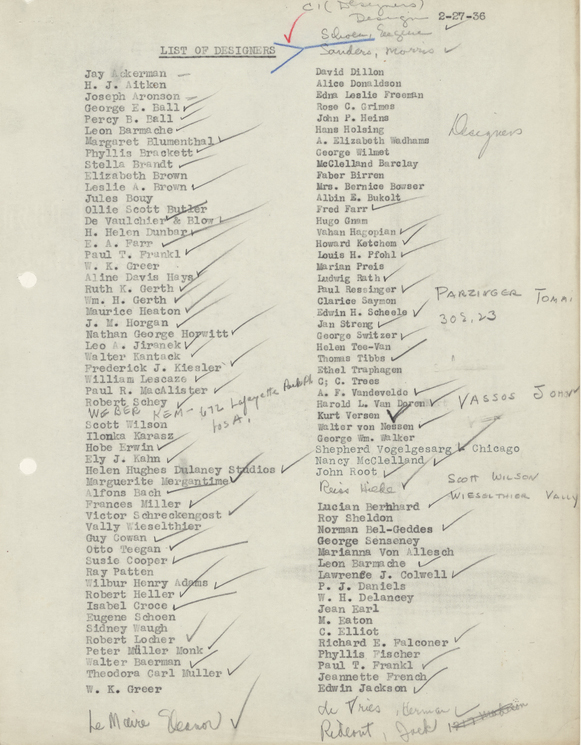
List of World’s Fair designers from early planning records, including Norman Bel Geddes as well as Frederick Kiesler and Lucien Bernhard. (Bernhard was a member of the Contempora Studio with Rockwell Kent, Paul Poiret, Bruno Paul, and Erich Mendelsohn where he worked as a graphic artist and interior designer.)
Can (should) designers and public relations people be trusted with manifesting visions of the future? The 1939 Fair design provided a material and spatial scaffold for Americans to imagine a future world of improved production and distribution. Our national obsession with consumption now relies on merchandise warehousing, data farms, and web-based distribution. Our addiction to innovation, merchandise, media, and experience persists. We’re equally distracted by our thirst for constant novelty, celebrity, entertainment, and spectacle. How can today’s designers, as cultural producers, affect national attitudes, encourage new habits, and effect actions for the social good? Without a WPA-like vision for programmatic support is there an emancipatory outcome possible as we design for the world of tomorrow?
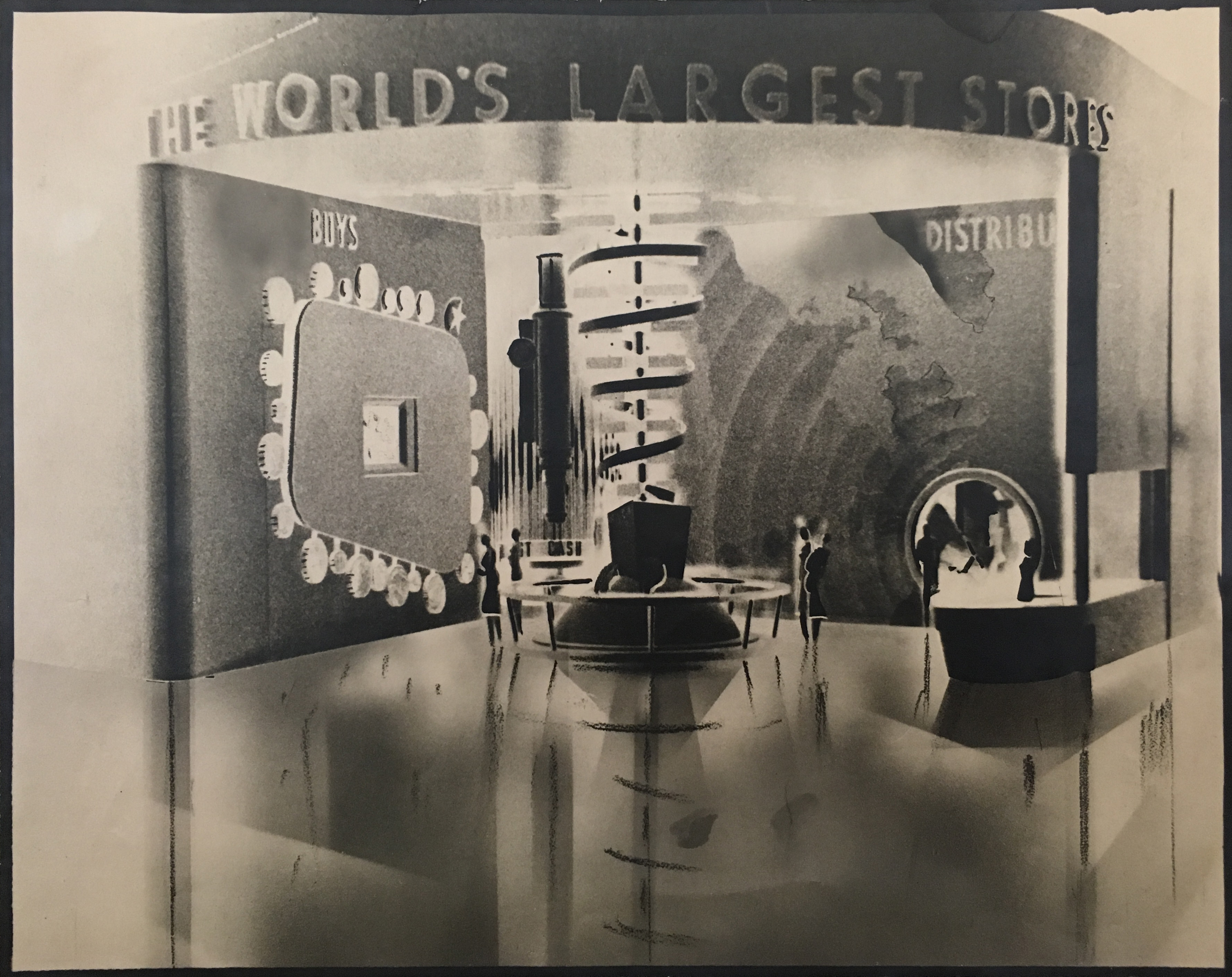
Buy and distribute...a 1939 Fair rendering prefigures the internet as ‘The World’s Largest Store. ‘The internet itself is physically rooted in environmentally taxing servers—it would be “the sixth largest country if based on how much electricity it consumes.”— Tim Frick, Designing for Sustainability: A Guide to Building Greener Digital Products and Services (O’Reilly Media, August 2016)
Present Future
Architectural critic Keller Easterling interrogates global free zones—in essence, ‘worlds of tomorrow’—as models of formulaic and repeatable meta-infrastructures in a radically globalized flow of goods, labor, and capital:
This new free zone paradigm, often no longer the fenced in warehousing compound of just 30 or 40 years ago, nevertheless harbors grisly, stabilized forms of labor abuse, and it still fails to return optimal economic results. But egged on by global consultancies, the zone is now bathed in redemptive rhetoric and treated as the necessary signal for entry into a global marketplace.
One of these meta-infrastructures is the phenomenon of the free zone—a highly contagious and globalized urban form and a vivid vessel of what I have termed extrastatecraft. A portmanteau meaning both outside of and in addition to statecraft, extrastatecraft acknowledges that multiple forces—state, non-state, military, market, non-market—have now attained the considerable power and administrative authority necessary to undertake the building of infrastructure.
One of these meta-infrastructures is the phenomenon of the free zone—a highly contagious and globalized urban form and a vivid vessel of what I have termed extrastatecraft. A portmanteau meaning both outside of and in addition to statecraft, extrastatecraft acknowledges that multiple forces—state, non-state, military, market, non-market—have now attained the considerable power and administrative authority necessary to undertake the building of infrastructure.
The zone—a.k.a., the Free Trade Zone, Foreign Trade Zone, Special Economic Zone, Export Processing Zone, or any of the dozens of variants—is a dynamic crossroads of trade, finance, management and communication.
This selection of promotional videos demonstrates how contagious the free zone has been all around the world with examples from Tunisia, South Korea, Saudi Arabia, Georgia, Ecuador, Kenya, Taiwan, Afghanistan, UAE, Lithuania, Malaysia, India, Libya, Nigeria, Holland, Laos, Azerbaijan, Gabon, Tanzania and Kuwait. Comically drunk on heroic urban aspirations the videos distract from their inherent violence as they mix things like fantasy environments, Hegel quotes and buildings shaped like diamonds or dolphins.
This selection of promotional videos demonstrates how contagious the free zone has been all around the world with examples from Tunisia, South Korea, Saudi Arabia, Georgia, Ecuador, Kenya, Taiwan, Afghanistan, UAE, Lithuania, Malaysia, India, Libya, Nigeria, Holland, Laos, Azerbaijan, Gabon, Tanzania and Kuwait. Comically drunk on heroic urban aspirations the videos distract from their inherent violence as they mix things like fantasy environments, Hegel quotes and buildings shaped like diamonds or dolphins.
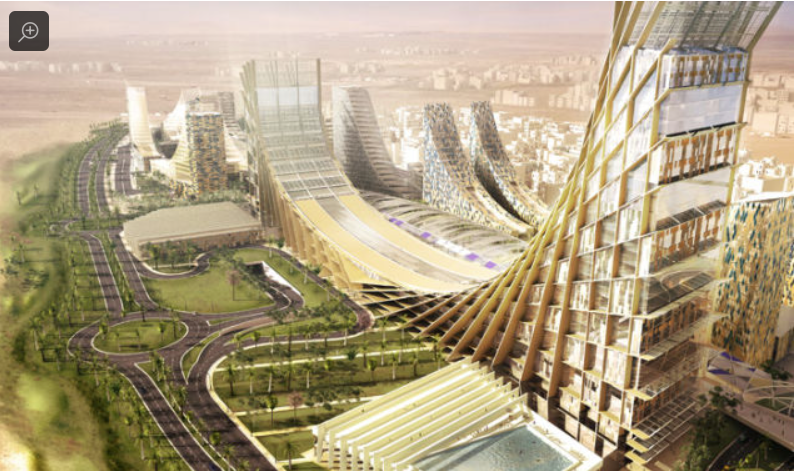



The Fair’s exhibits proclaimed an expanded world market with America at the epicenter; the scale and reach was imagined to sustain brick-and-mortar manufacturers and retail stores. (Above) Stills from promotional videos of computer-rendered ‘free zone’ cities. Together with web-based distribution, these ‘extra-state’ cities comprise the new infrastructure of a global marketplace. Their host nations represent an alternative ‘world’s fair’ to the 1939 Fair, which excluded the participation of the majority of the globe.
From On Speculative Design by Benjamin H. Bratton:
Design is also the means by which pathological relationships to material culture are made more efficient and more delightful, and we are worse for it. Some may even conclude that the job of Design in the 21st century is to undo (much of) the Design of 20th. It may also be to re-claim and re-launch other frustrated Modern impulses that were dry-docked by century’s end, not only designing things —widgets, withdrawn objects, manifest subjectivities, formal forms, etc.— but also designing the relations between them: systems, supply-chains, encounters, obligations, accounting protocols, and so on.
…speaking about “the future” is a way of saying things about the present—critical, utopian, projective, pragmatic and/or simply unspeakable things—but too often it is an alibi for saying nothing at all. “The future” is that place where skateboards hover and ambient fields of graphical user-interfaces are slightly more elysian; it is a rhetorical sink where half-baked marketing plans usurp the place where actual ideas are supposed to go.
…The contemporary project of Design (inclusive of SpecDes) is situated by new materials and material forms. The emergence of “modern” Design is concurrent with the emergence of the materials, processes and technologies of mass production and distribution: plastics, metals, molding, modeling, printing, stamping, shipping, replicating, stacking,
…speaking about “the future” is a way of saying things about the present—critical, utopian, projective, pragmatic and/or simply unspeakable things—but too often it is an alibi for saying nothing at all. “The future” is that place where skateboards hover and ambient fields of graphical user-interfaces are slightly more elysian; it is a rhetorical sink where half-baked marketing plans usurp the place where actual ideas are supposed to go.
…The contemporary project of Design (inclusive of SpecDes) is situated by new materials and material forms. The emergence of “modern” Design is concurrent with the emergence of the materials, processes and technologies of mass production and distribution: plastics, metals, molding, modeling, printing, stamping, shipping, replicating, stacking,
etc. For the Design of what Reyner Banham called “the first machine age,” industrial materials allowed for the inexpensive distribution of standardized designs to a mass society: new matter provided for a new materialism.; (composition) techniques became schools of thought and designed forms became fixed at certain levels of implementation (type and image, shelter, apparatus, transportation, etc.), modern Design (and Design education) would coalesce around corresponding expertise in graphic design, industrial design, interaction design, architectural design and so on. …Today we confront another gamut of materials that is potentially just as transformative. From biotechnology to the internet of things to artificial intelligence and robotics to networked additive manufacturing and replication, this material palette provides for the recomposition of the world at scales previously unthinkable, turning living tissue into a plastic medium andimbuing inorganic machines and landscapes with new sorts of practical intelligence.
…One of the chief epistemological and methodological complexities of Design models is how easily one kind of model (descriptive, diagrammatic, diagnostic, normative) can be transposed into the purposes of another (projective, instrumental, managerial, aspirational).
…One of the chief epistemological and methodological complexities of Design models is how easily one kind of model (descriptive, diagrammatic, diagnostic, normative) can be transposed into the purposes of another (projective, instrumental, managerial, aspirational).
New Business, New Shadows
The internet of things perpetuates an evermore networked consumption of innovations and, well, things. As quickly as systems are advancing, other structures and relationships (physical, structural, social) become obsolete: our ‘Public Welfare’ rests uneasily amidst cryptocurrencies, AI and robotics, speculative space travel, privatized incarcertation, Big Pharma, and more. Egmont Arens’ words haunt us: “Consumer engineering does not end until we can consume all we can make.”
As the future of work itself is called into question, where does this new planned obselescence lead? From the article, IBM Unveils System That ‘Debates’ With Humans:
“IBM’s system was designed to debate about 100 topics, but these interactions are tightly constrained: a four-minute opening statement followed by a rebuttal to its opponent’s argument—and then a statement summing up its own viewpoint. Subsidized space exploration, the machine said during its opening statement, ‘inspires our children to pursue education and careers in science and technology and mathematics.’”
“It is more important than good roads or improved schools or better health care,” it added.

Democracity, 1939, pamphlet cover and plan drawing. The Perisphere contained the Fair’s central thematic exhibit, “Democracity,” a scale diorama of an idealized metropolis of the future as imagined by American industrial designer Henry Dreyfuss.


Apple headquarters, 1 Infinite Loop, Cupertino, CA 95041. Tags: communication; amusement; production and distribution
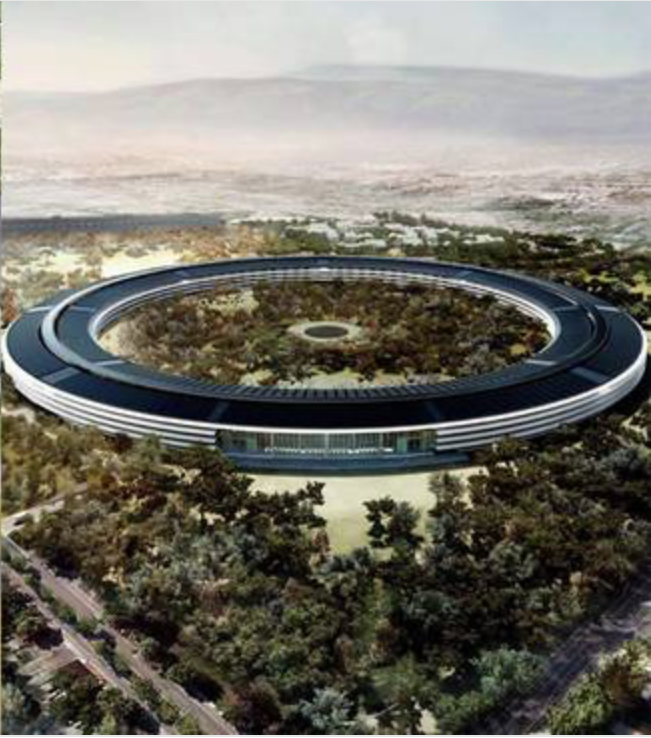
The Fair’s themes offer intersecting narrative topologies; its renderings and built forms invite an inventory of formal typologies. It’s an irresistable temptation to rhyme the Fair’s futuristic forms with those of the entities we consider today’s most future-focused—and that by doing so we may learn something in “presenting a new and clearer view of today in preparation for tomorrow; a view of the forces and ideas that prevail as well as the machines.” (from Democracity)
The Fair’s formal typologies live on in the corporate campus, the industrial park, the periphery ring road, the pedestrian walkway/ramp/bridge, the atrium, the manufactured landscape, the water feature, and so on. Today, the Fair’s organizing thematic zones—Amusement, Communications, Community Interests, Food, Government, Transportation, and Production and Distribution—have largely been absorbed into the goods and services of a handful of giant technology companies.
The layout of the 1939 World’s Fair grounds essentially collapsed the globe (albeit a highly edited version) into a single sprawling campus. It established zones for Americans to experience idealized depictions of international cultures and customs, and for corporations to present the ordinary public elaborate narrative display of their products and services.

(Below) Facebook headquarters, 1 Hacker Way, Menlo Park, CA 94025. Tags: amusement; communications; community interests; government; production and distribution—i.e., all thematic categories

Much of the Fair’s architecture was influenced by the International Style of Le Corbusier, whose only built project in the US, Harvard’s Carpenter Center, features many of the same structural tropes. (Inside the Perisphere itself, lay the Democracity exhibit and its key element, Centerton, a futuristic city modeled in miniature. In planning this creation, famed industrial designer Henry Dreyfuss took several cues from Le Corbusier’s proposed Ville Radieuse [Radiant City] (from NYPL archive).


(Below) Google headquarters, 1600 Ampitheatre Pkwy., Mountain View, CA 94043. Tags: communication; amusement; production and distibution; government


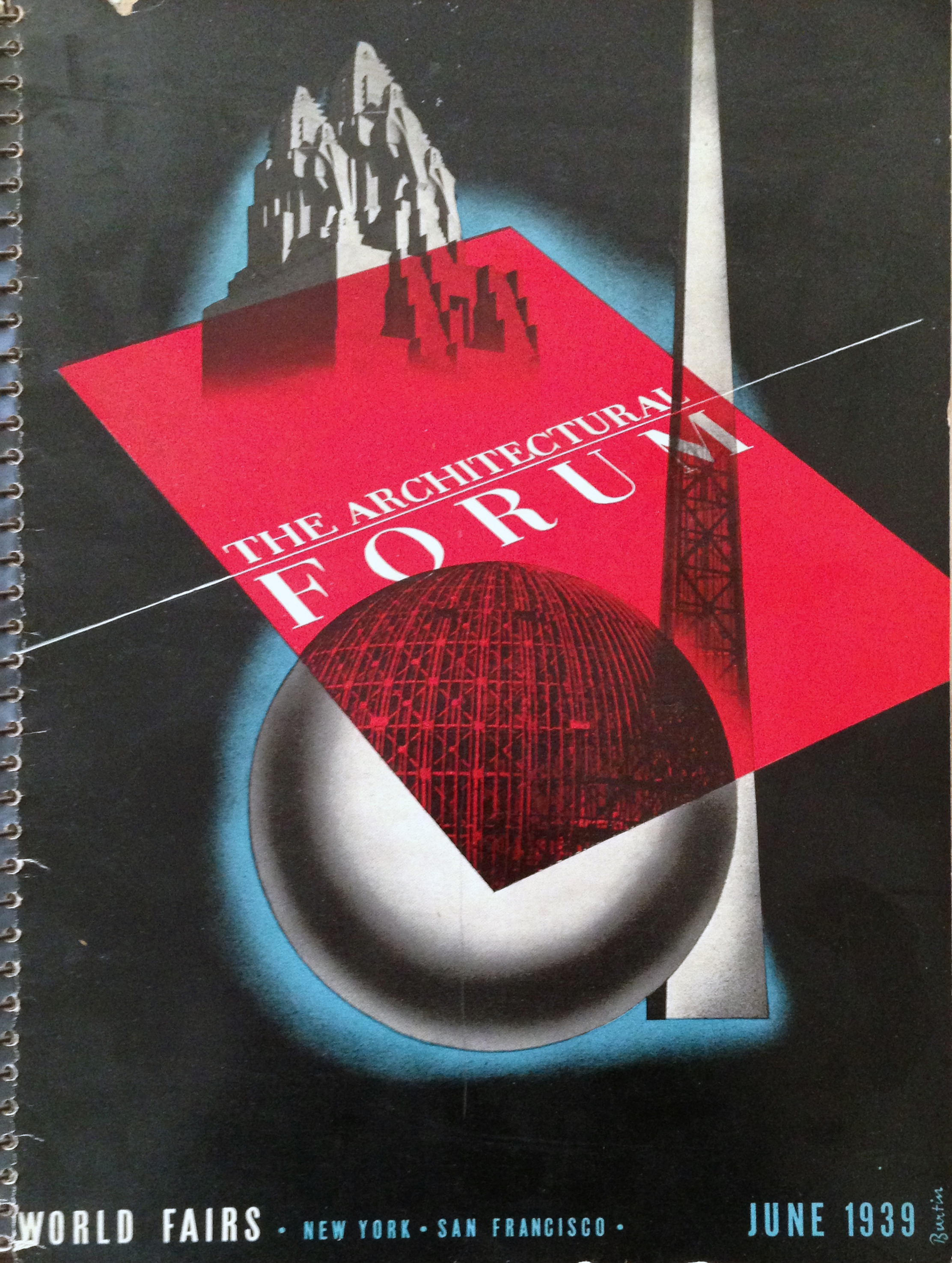
The June 1939 The Architectural Forum issue was devoted to World’s Fairs; most of its contents were advertisements for construction firms and material providers for the 1939 New York Fair’s massive building project. A giant former ash dump in Corona Park on the outer edges of Queens was transformed to become the site of the fairgrounds.
(Above) The Fair’s signature image was the Perisphere and Trylon. An ad describes the innovative heat-sensitive film needed for mural projections inside the Perisphere.
(Below) Amazon headquarters, 410 Terry Ave. North, Seattle, WA 98109. Tags: communication; amusement; production and distrbution; food.
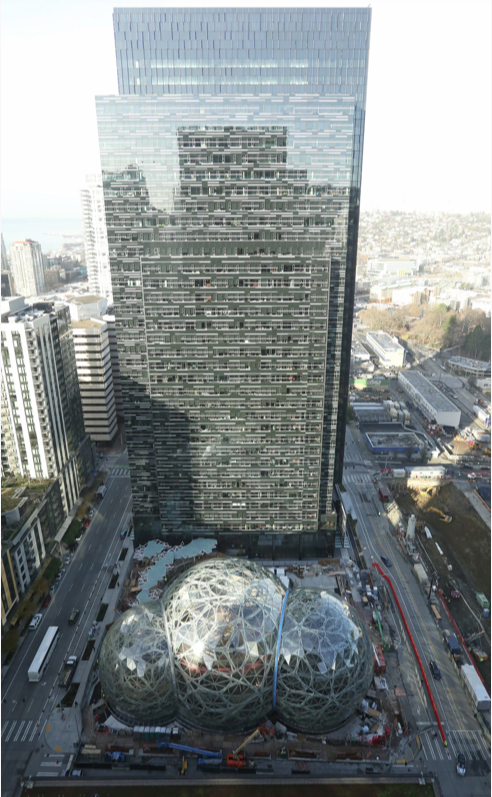
The Fair strived to represent all aspects of American life, telling our stories through products, processes, industry, and cultural narratives. In its theme diagram, it also proposed a core tenet of Democracy: government stewardship of the health and public welfare of the nation’s citizens.
1939’s World of Tomorrow did not imagine today’s scale of conflation, and confusion, between public and private with the advent of data management and cloud computing, which has its own claims on ‘the world of tomorrow.’
Information architecture is remaking the built environment as well as testing the notions of personal privacy, national security, intellectual property, and government stewardship for essential needs of the public, including education.
(Below) New York Times, Dec. 3, 2017) Oracle is the world’s giant for cloud computing and data management. (From their Newsletter, Issue 1: The Future of Data Management is Autonomous) The rise of data as a valuable asset of your organization, and therefore your enterprise database, will have a direct impact on the future success of your business. ...The Oracle Autonomous Database Cloud integrates applied machine learning to eliminate human labor, human error, and manual tuning to enable unprecedented availability, high performance, security at much lower cost.


The monopolistic range of major tech companies tests every piece of democracy’s relational parts from governance to physical infrastructure to labor to taxation—all of which affects our ‘welfare’ as a set of policies. Andrea Flynn and Susan R. Holmberg of the Roosevelt Institute write:
The conditions to which FDR was responding in 1944 are not dissimilar from those in which we currently find ourselves. Neoliberal policies have driven economic inequality to pre–Great Depression levels, with communities of color and women shouldering an outsized burden. The consolidation of corporate power today is at a scale we have not seen in over a century, and workers are feeling disenfranchised and powerless. These trends have arguably sown the seeds of fascism, which are germinating in Europe, Latin America, and even here in the United States, much as they did in Germany in the 1930s.
This ongoing project is aimed at making visual the many relationships between then and now, through display of physical artifact, photograph, and document—but also making use of the dynamic flow of data itself to give visible shape to the networks of cause, effect, meaning, and form.